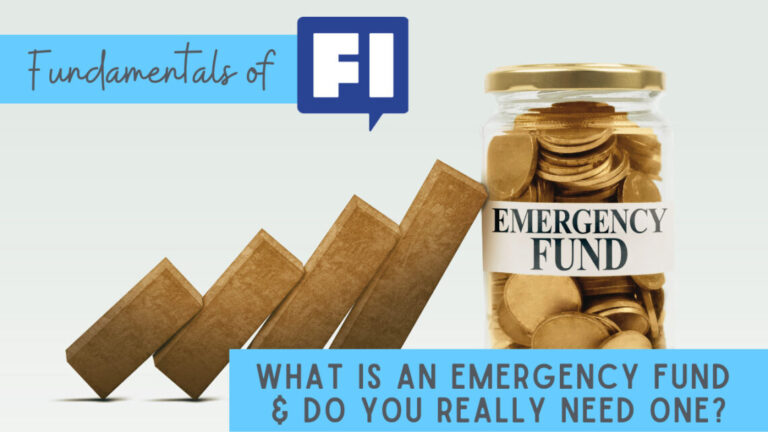The concept of an emergency fund, traditionally seen as an essential pillar of financial security, may need a reevaluation in the context of financial independence. The conventional wisdom suggests parking a substantial sum, often equated to six months’ worth of expenses, in a low-interest savings account. This standard advice, while rooted in prudence, overlooks the dynamic nature of personal finance and the varied needs of individuals.
Understanding the Traditional Emergency Fund
An emergency fund, as commonly advised, is a cash reserve set aside for unforeseen circumstances. The amount, often suggested to be equal to six months of living expenses, is meant to provide a financial buffer against life’s unexpected events. This fund is typically kept in a savings account, where it earns minimal interest, emphasizing accessibility over growth.
The Case for a More Flexible Approach
However, this one-size-fits-all approach may not align with everyone’s financial journey, especially those pursuing financial independence. The concept of Financial Independence revolves around accumulating assets that significantly exceed your expenses, far beyond the traditional six-month safety net. For someone targeting FI, the goal is to build a net worth that can sustain lifelong financial security, often calculated as 25 times their annual expenses.
Redefining the Emergency Fund in the Context of Financial Independence
- Starting Small: For individuals starting with limited savings, the initial focus should be on building a modest emergency fund. Even a small amount, like $1,000 or $5,000, can be a game-changer, providing peace of mind and stability.
- Beyond the Basic Safety Net: Once the basic emergency fund is established, the focus should shift to investing and growing these savings. Low-cost, broad-based index funds, such as total stock market or S&P 500 index funds, are often recommended for long-term wealth accumulation.
- Understanding Opportunity Cost: Money sitting idle in a savings account has its own cost, known as the opportunity cost. By not investing this money, one misses out on potential growth, which can be substantial over a period of decades.
- Rethinking Emergencies in the Modern World: In today’s financial landscape, the definition of an emergency requiring immediate cash is evolving. With the ability to transfer funds quickly and the use of credit cards for unforeseen expenses, the need for a large cash reserve is diminishing.
- Personalizing Financial Strategies: Ultimately, personal finance is deeply individual. While some may find comfort in keeping an additional cash buffer, others might opt for a minimal or nonexistent emergency fund, focusing instead on investments and asset growth.
The Bottom Line
The journey toward Financial Independence demands a reevaluation of traditional financial norms, including the concept of an emergency fund. By understanding one’s personal financial goals and the modern financial landscape, individuals can craft a strategy that aligns with their path to financial independence. This approach embraces a more dynamic view of personal finance, where the traditional emergency fund is just one piece of a larger, more complex financial puzzle.
Video Transcript
What is an emergency fund, and do you actually need one is a much more nuanced and complex answer than I think you would guess. And I would have guessed before I found the fundamentals of financial independence. So let’s start with an emergency fund as most people define it is an amount of money that sits on the sidelines. It sits in a savings account at your big bank, probably earning 0.01% interest. And it just sits there that you could call on it at any given moment. Most personal finance experts say this should be about six months’ worth of expenses, which means if your life costs $50,000 a year, that’s $25,000. If you look to the experts, they would say your first financial goal is to just put your head down and save up that $25,000 and just have it sit there.
I think there’s some piece of good advice there in that you clearly need a savings rate. You need assets, you need wealth, you need investments, you need all of these things. You cannot be living paycheck to paycheck and have a successful financial life. You just can’t. It’s impossible. So clearly, having savings every single month is your first and foremost goal when it comes to personal finance and your path to financial independence. I don’t think most of us need this inert emergency fund that just sits around doing nothing, especially not six months’ worth of your expenses.
Now, let’s not confuse anything. Clearly. I think you need assets far surpassing six months’ worth of your expenses. And I don’t think any type of goal is to stop when you have a net worth of only, in this case, $25,000. That’s not the goal here. The goal here ultimately is financial independence. So that means 25 times your annual expenses. So in this case, that would be $1.25 million, not just the $25,000 emergency fund that experts would say. But again, taking that step back and saying, okay, I think for anyone who has no money saved up, who has no assets. Getting $1,000 saved, $2,000, $5,000, or something like that that will be such a game changer for your life in a positive way that you cannot even Comprehend it right now, so absolutely your first step should be get that savings every month cut some expenses and increase your income to the point where you have that gap every month where you are saving money and And I agree. I think the first, let’s say $5,000 should just go in an emergency fund and should sit there and should help lower your stress levels. Because if you don’t have $1,000 saved up, if you have credit card debt and no assets, that is truly a, your hair is on fire type emergency scenario because life is lumpy, as we say, and you’re going to get hit with some expense that wouldn’t be an emergency to me because I have assets. But if you have no money saved up and you get a flat tire, and it’s $150, that’s an emergency to you if you have nothing saved up.
So you need to get to the point where little life is lumpy type scenarios do not cause you any stress at all. Sure. You can be frustrated. Obviously, I’d be frustrated if I got a flat tire, but it wouldn’t be a stressful situation for that $150. So that is absolutely the starting point. And I think once you get beyond that, then you start thinking, okay, I have $5,000 saved up. I have $10,000 saved up. What do I actually want to do with this money? And I think it’s critical to invest in. And most likely, what that will mean is low-cost, broad-based index funds, like a total stock market index fund or an S&P 500 index fund, or something like that, whatever you decide on. But that is your best route, in my estimation, for maximizing your net worth over a 30 to 50-year period, which is really what we’re thinking about here. We’re not thinking about the short term.
So, do you want $25,000 in our scenario tied up, just sitting there doing nothing, which that 25,000 is going to be the same $25,000 50 years from now, or do you want it to compound and grow? And I think using the rule of 72, you can estimate that your money would double every nine years based on an 8% annual growth rate. So, nine years, that $25,000 would be $50,000. Another nine years later, it would be $100,000, then $200,000 after 27 years, and $400,000 after 36 years. You can see that’s what’s known as opportunity cost of just having that money sitting around. So I think the ultimate answer is, yes, clearly you need money saved up, but do you need it sitting around doing nothing? No, I don’t think so. And just as a final thought experiment of this is once you have assets, let’s say you have a hundred thousand dollar net worth.
What could actually be an emergency that you would need more than $5,000 or $10,000 in a day’s time? Because realistically worst-case scenario, you can put just about everything on a credit card, and you get the grace period until the end of that statement plus the amount of days you have to pay it. In that time, you can sell some assets, potentially Transfer the money back to your checking account and pay off the credit card bill, and it would cost you absolutely nothing so that’s a thought experiment for Oh, what is truly an emergency that I would need cash in under 24 hours. And it’s very hard to come up with something that really fits that because, in this day and age, you can transfer money very, very quickly. So, under three business days, in most cases, or you can put just about everything on a credit card.
So, in summary, I want to say assets, savings rate, and net worth these are critical concepts, and you need to do everything you can to maximize them over your path to financial independence and then really your adult life. But do you need an emergency fund of money just sitting around inert? No, you really don’t. beyond a certain amount. And just in full disclosure, I keep an extra bit of money, probably about $5,000 extra, sitting in my checking account because it lowers my stress. And I think that’s one of the biggest names of the game here is how can you set up a financial life that lowers your stress and happens on autopilot. And I think that’s something that helps me sleep at night a little bit better. But some people I know keep $0 extra and they know exactly what’s coming in and out of their checking account. Therefore, their emergency fund needs to be quite small or virtually non-existent. So as always, personal finance is personal, but it’s important to actually think through this instead of just listening to the dogma of the only goal is six months of expenses.



